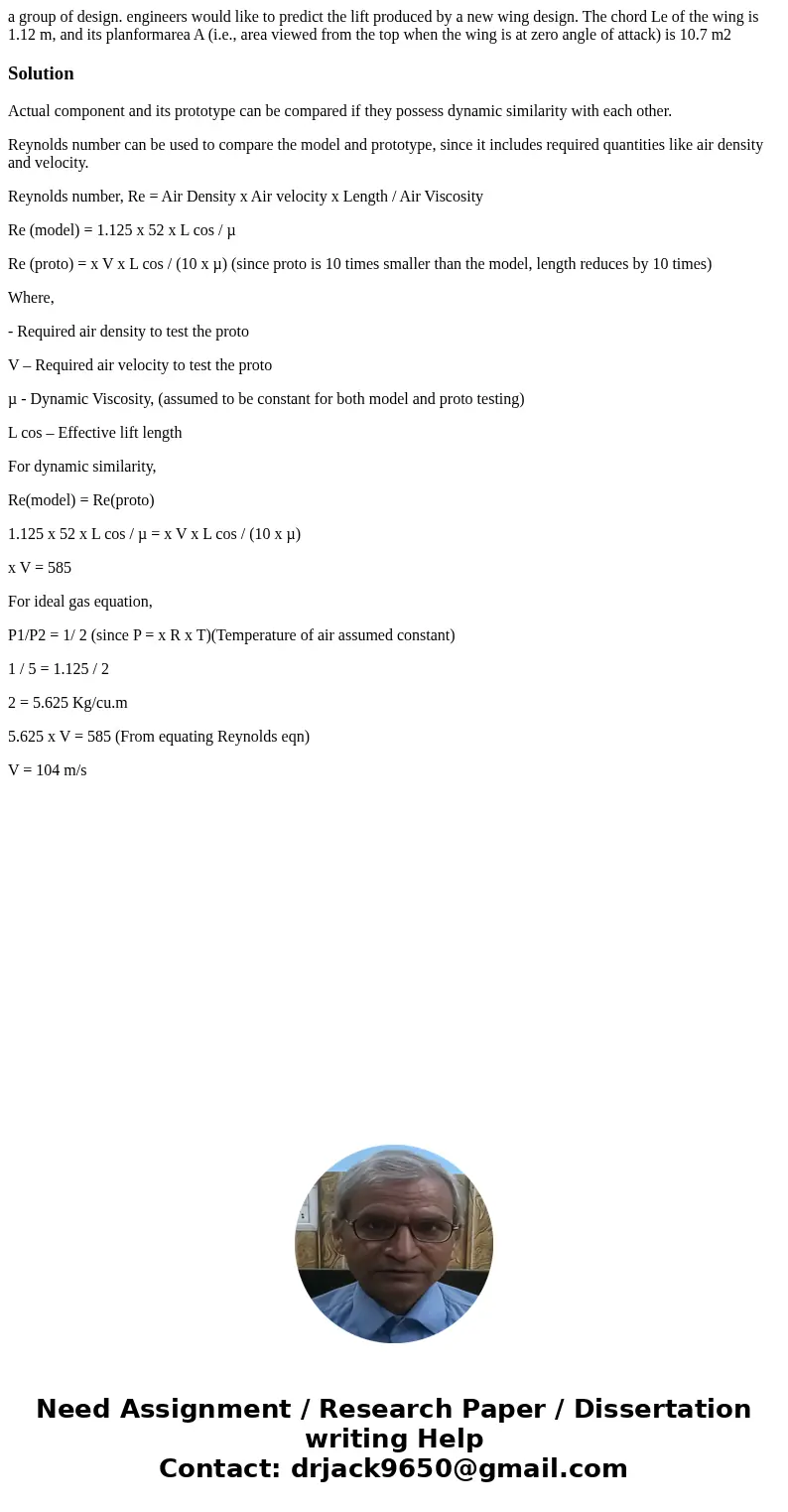a group of design engineers would like to predict the lift p
Solution
Actual component and its prototype can be compared if they possess dynamic similarity with each other.
Reynolds number can be used to compare the model and prototype, since it includes required quantities like air density and velocity.
Reynolds number, Re = Air Density x Air velocity x Length / Air Viscosity
Re (model) = 1.125 x 52 x L cos / µ
Re (proto) = x V x L cos / (10 x µ) (since proto is 10 times smaller than the model, length reduces by 10 times)
Where,
- Required air density to test the proto
V – Required air velocity to test the proto
µ - Dynamic Viscosity, (assumed to be constant for both model and proto testing)
L cos – Effective lift length
For dynamic similarity,
Re(model) = Re(proto)
1.125 x 52 x L cos / µ = x V x L cos / (10 x µ)
x V = 585
For ideal gas equation,
P1/P2 = 1/ 2 (since P = x R x T)(Temperature of air assumed constant)
1 / 5 = 1.125 / 2
2 = 5.625 Kg/cu.m
5.625 x V = 585 (From equating Reynolds eqn)
V = 104 m/s

 Homework Sourse
Homework Sourse